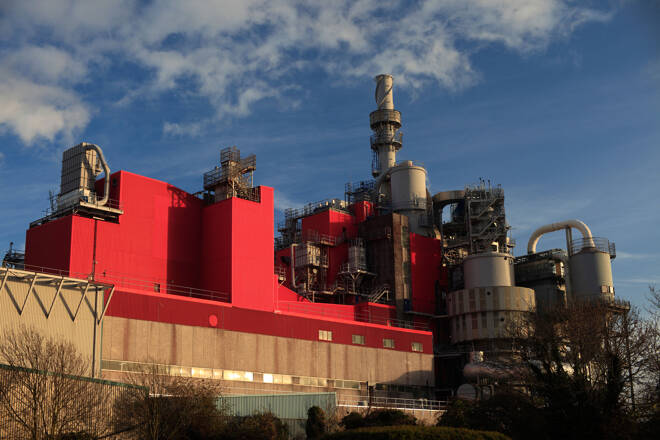Advertisement
Advertisement
German Factory Orders Beat Forecasts But Fall for a Second Month
By:
German factory orders fell less than expected in April. However, a second monthly decline and a contracting manufacturing sector paint a gloomy picture.
It is a relatively busy day on the European economic calendar. German factory orders were in focus this morning. In March, German factory orders tumbled by 10.9%. Another sizeable fall in orders could force the ECB to rethink its monetary policy plans to tame inflation.
German factory orders fell by 0.4% in April versus a revised 10.9% slump in March. Economists forecast factory orders to fall by 2.2% in April.
According to Destatis,
- New orders increased by 1.4% in April, excluding large-scale orders.
- Orders for the manufacture of machinery and equipment fell by 6.2%, with miscellaneous vehicle construction new orders tumbling by 34.0%.
- However, orders for electrical equipment rose by 12.0%.
- There was also a 2.4% increase in the manufacture of motor vehicles, trailers, and semi-trailers.
- News orders for consumer and capital goods fell by 2.5% and 1.8%, respectively.
- However, orders for intermediate goods increased by 2.3%.
- Notably, domestic increased by 1.6%, while orders from overseas fell by 1.8%.
- New orders from the euro area and the rest of the world declined by 2.7% and 1.1%, respectively.
- Looking at the three-month average, new orders declined by 2.3% compared with the previous three-month average.
While the numbers beat forecasts, the continued decline in new orders and weak overseas demand remains a concern. In May, Germany’s manufacturing PMI fell from 44.5 to 43.2, with new orders falling at the most marked rate since November 2022.
EUR/USD Reaction to German Factory Orders
Ahead of the factory order numbers, the EUR/USD fell to an early low of $1.07076 before rising to a pre-stat high of $1.07315.
However, in response to the April figures, the EUR/USD fell to a post-stat low of $1.07214 before rising to a high of $1.07280.
This morning, the EUR/USD was up 0.14% to $1.07268.
Next Up
Later today, euro area retail sales figures will also move the dial. The current inflationary environment weighed on consumer spending in March. While economists forecast a modest 0.2% increase in April, an unexpected fall in retail sales would add more pressure on the ECB to hit the pause button.
With the economic calendar on the busier side, investors should monitor central bank chatter throughout the Monday session. However, no ECB members are on the calendar to speak today, leaving commentary with the media to influence.
While no ECB members are speaking, the ECB will release the ECB Consumer Expectation Survey results that need consideration.
It is a quiet session on the US economic calendar. There are no economic indicators to move the dial. The lack of economic indicators will leave Fed chatter to influence.
On Monday, the US ISM Non-Manufacturing PMI numbers provided the Fed doves with more reason to push for a June pause. According to the CME FedWatch Tool, the probability of a 25-basis point June interest rate hike slipped from 25.3% to 21.2% on Monday versus 64.2% one week earlier.
About the Author
Bob Masonauthor
With over 28 years of experience in the financial industry, Bob has worked with various global rating agencies and multinational banks. Currently he is covering currencies, commodities, alternative asset classes and global equities, focusing mostly on European and Asian markets.
Advertisement
